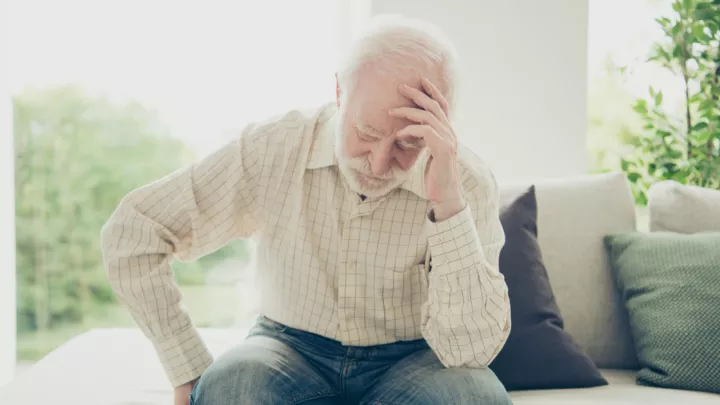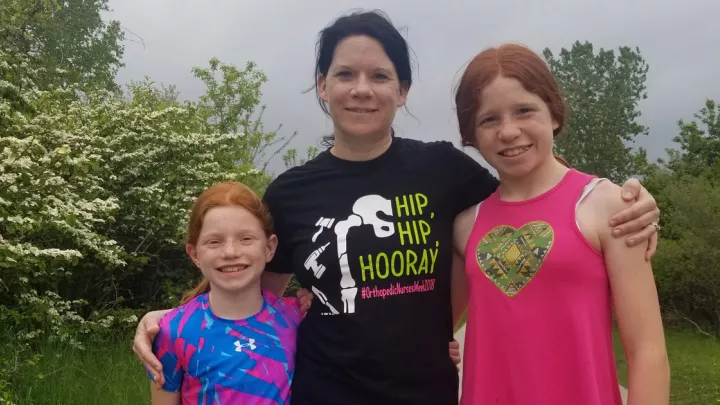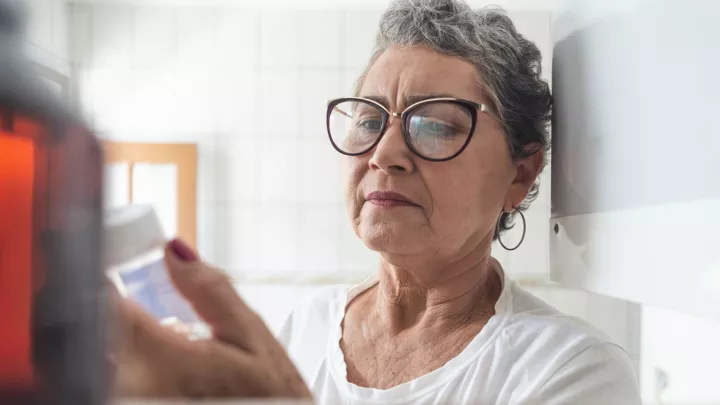Healing and recovering after stroke: 9 common stroke complications and how to deal with them

Strokes are sudden, mostly unpredictable, and dramatic in the impact they have. They not only steal from the person some or many of their normal basic functions and abilities, but dramatically impact their daily lives and well-being, and have significant effects on their family and caregivers.
Fortunately, after decades of research and advances, our treatments can limit, reverse and in some instances almost cure the deficits resulting from a stroke soon after it happens. Similar advances can prevent strokes in people most at risk, particularly those who already had a stroke or a transient ischemic attack (TIA).
Unfortunately, once a stroke and the resulting brain damage are established, curing or improving neurologic deficits is difficult. Until future breakthroughs come along, we have many ways to understand, overcome, and alleviate the pain and suffering resulting from stroke.
Here are nine common stroke complications and how to deal with them.
1. Stroke after effects in the brain
Most people have some residual neurologic deficits after a stroke, which can range from a nuisance to severe disability. After a stroke, the time to think and process information may be slower, the concentration may be impaired, and some basic learned skills may be lost, slowed or impaired.
Functions the brain uses to process information include:
- Communication
- Spatial awareness
- Memory
- Concentration
- Routine skills
Rehabilitation can help overcome some of these deficits, through focus, exercise, repetition and training. Unfortunately, large and multiple strokes may eventually result in vascular dementia.
2. Will speech return after stroke?
Speech problems are common after stroke, including:
- Poor articulation from weakness or coordination (dysarthria or slurred speech)
- Poor interpretation or production of speech (aphasia)
These deficits may also impact your ability to write or understand what is written. Rehabilitation with a speech pathologist is very helpful to identify issues and learn exercises to overcome them.
3. Vision loss or eye problems
When brain areas responsible for processing vision are damaged by a stroke, there could be loss of vision to one side or the other, or more rarely total blindness. Vision loss may affect routine activities, such as driving or walking. After a stroke, we identify the extent of vision issues to avoid affected activities and use rehabilitation to overcome these limitations safely.
4. How to walk after stroke
Over half of people after having a stroke will have some degree of weakness, usually on one side. Others may have only balance and coordination problems that can be isolated or are additional to the weakness. These impairments can partially or significantly impact their ability to walk or move within their home. Some, unfortunately, will be limited to living in a skilled nursing facility.
Rehabilitation through muscle and balance strengthening can greatly help, along with using supportive gear or equipment.
5. Swallowing and eating after stroke
Strokes can interrupt muscle coordination and movements for eating. Dysphagia is when the mouth and esophagus allow food to enter the trachea and the lungs. The resulting irritation and infections (pneumonia) can be devastating.
Rehabilitation with a speech pathologist can help screen for those limitations, improve them through techniques, and identify those with significant impairment that should not eat or drink through their mouth. Until a full assessment is performed, you may initially have a feeding tube through the nose. If needed, a percutaneous gastrostomy or PEG is placed to allow safe nutrition. This often may be reversed and discontinued once swallowing abilities recover over time.
Swallowing issues after a stroke may lead to a lack of nutrition. A healthy diet provides the necessary nutrients to rebuild muscles, joints, tissues and hopefully brain.
A Mediterranean-like diet rich in fruits, vegetables, nuts, olive oil and seafood is the best common-sense recommendation.
- Eat fresh fruits and vegetables to get essential vitamins and minerals
- Reduce salt in the diet to lower blood pressure, especially if you have hypertension
- Increase complex carbohydrates to manage diabetes and pre-diabetes (and reduce simple carbohydrates)
- Reduce fats, particularly saturated fats, to lessen the possibility of hardening or narrowing of the arteries
6. Getting back to sex
Having a stroke does not mean you should forget about having sex. Many stroke survivors fear intimacy because they're worried another stroke will happen.
Some men may develop erectile dysfunction, which medications can treat. Similarly, omitting certain medications may reverse a loss of libido (lower sex drive).
Every person is different, and the way each stroke affects a person is unique. Be open about your concerns and fears with your physician or provider – they can help you have an objective view and determine how to proceed.
7. Driving after stroke
Driving is very helpful for independence and engagement in social activities. Many individuals after a stroke are eager to return to driving as soon as possible.
However, driving with neurologic impairment exposes the driver and other drivers on the road to the risk of accidents that can be fatal or disabling. Before returning to driving, your physician should perform a formal assessment of visual, cognitive and reflexive impairment.
8. Incontinence or leaking
The extent and locations of the stroke can impact the brain's control over the bladder and bowel, causing incontinence. This can be embarrassing to patients and their families and isolate them. Thankfully, incontinence is treatable with medications, exercise and incontinence products.
9. Emotions and mental health
Strokes can cause or worsen anxiety and fear. About 20% to 30% of stroke survivors experience depression, which is routinely screened for and treated. It is mostly transient over the next couple of years. Other psychiatric conditions may rarely occur or be uncovered by a stroke. In addition to medications and therapy, family and friend support are essential to mental health.
Caregivers' emotional health matters, too. Caring for patients with stroke and significant disability can be challenging and taxing to the caregiver's patience, endurance and emotions. Avoiding frustration, exhaustion, and anger while managing self-emotions and well-being not only helps the caregiver but also the patient.
How to prevent another stroke
Patients with a stroke or TIA are at the highest risk of having another stroke. Starting a stroke prevention strategy soon after a first stroke is critical to preventing additional disability. Fortunately, we have many ways to control the risk factors of hypertension, diabetes and high cholesterol, in addition to using medications to thin the blood gently or powerfully. Surgery or interventions can also help some at-risk patients. We adapt treatments to the needs of each individual and ensure that the goals of the treatment are achieved through close follow up.
How long does it take to recover from a stroke?
How much recovery to expect and how long it takes are difficult questions to answer. Because strokes affect different parts of the brain, recovery depends on the nature and extent of the deficits, age, pre-stroke baseline and other medical conditions.
A common rule of thumb is that the fastest, biggest recovery will happen over the first three months, then it slows down a little over the next six months, and becomes more subtle and slower after that, although it may continue over the next year or two or more. Earlier, more thoughtful, vigorous, and thorough rehabilitation is essential for identifying the impairments and deficits and helping improve and speed up the recovery in the early period.
After a stroke, family and social support are critical in helping the patient navigate the post-stroke course, overcome their deficits and disabilities, break their isolation, and return to their environment.







